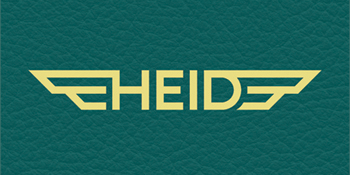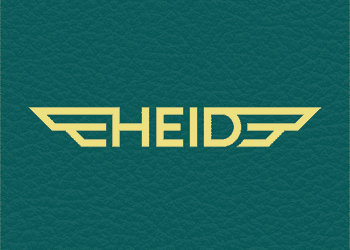1. Introduction: The Power of Symbols in Human Society
Throughout history, symbols of power have played a crucial role in shaping human societies and individual beliefs. From ancient temples and royal insignia to modern logos and digital icons, symbols serve as visual representations of authority, divine right, or social status. These symbols are not merely decorative; they carry profound psychological impacts, influencing perceptions, behaviors, and collective identities.
This article explores how symbols of power have historically functioned and how their influence persists today. By examining examples from ancient civilizations to contemporary branding, including innovative digital symbols, we will understand their role in shaping human beliefs and societal structures.
Contents
- Historical Foundations of Symbols as Instruments of Power
- The Role of Architectural and Artistic Symbols in Conveying Power
- How Symbols of Power Influence Human Beliefs Today
- The Cognitive and Cultural Mechanics Behind Symbolic Influence
- Non-Obvious Perspectives: Symbols and Modern Technology
- Ethical and Societal Implications of Symbols of Power
- Conclusion: The Enduring Influence of Symbols of Power on Human Beliefs
2. Historical Foundations of Symbols as Instruments of Power
a. Symbols in ancient civilizations: temples, sculptures, and religious artifacts
Ancient societies relied heavily on symbols to legitimize authority and communicate divine or royal power. Temples, such as Egypt’s Karnak or Mesopotamia’s ziggurats, were architectural embodiments of spiritual authority, designed to awe worshippers and reinforce religious hierarchies. Religious artifacts—like the Egyptian scarab or the Babylonian Ishtar Gate—served as tangible symbols of divine favor and cosmic order.
b. Case study: Greek mythological symbols—columns, gods, and their significance
In ancient Greece, symbols such as the Corinthian column or depictions of gods like Zeus and Athena represented divine authority and civic identity. The Corinthian column, with its ornate capital, symbolized the sophistication and power of Greek architecture. Mythological figures conveyed moral lessons and reinforced societal values, echoing the belief that divine favor was essential for societal stability.
c. Transmission of myth and symbol meaning: oral traditions and their influence
Mythologies, transmitted orally across generations, maintained and amplified the significance of symbols. For example, stories about gods and heroes embedded symbolic meanings that justified social hierarchies and moral codes. These narratives created shared cultural frameworks, ensuring that symbols of power remained central to societal cohesion.
3. The Role of Architectural and Artistic Symbols in Conveying Power
a. Architecture as a symbol of divine authority: temples and monumental structures
Architectural grandeur, such as the Parthenon in Athens or the Pantheon in Rome, served as physical symbols of divine authority and societal strength. Their scale and design communicated the power and stability of the ruling class or religious institutions, often aligning human authority with divine favor.
b. Sculptures and images: idealization and their role in reinforcing belief systems
Sculptures of rulers or deities, like the statues of Pharaohs or Roman emperors, were designed to idealize and immortalize authority. These images reinforced social hierarchies and served as enduring symbols of legitimacy and divine right.
c. Connecting physical symbols to spiritual and social hierarchies
Physical symbols—be they monumental structures or artistic representations—acted as tangible links to spiritual and social hierarchies. They fostered collective belief by materializing abstract concepts of divine authority or royal power, making them accessible and enduring.
4. How Symbols of Power Influence Human Beliefs Today
a. Modern reinterpretations of ancient symbols in media and branding
Today, ancient symbols are reimagined within media and branding to evoke certain perceptions. For example, corporate logos often incorporate mythological or historical elements to associate brands with strength, stability, or prestige. The use of mythological symbolism in advertising taps into subconscious associations, influencing consumer beliefs and behaviors.
b. Case example: The where to play olympus 1000 as a contemporary symbol invoking mythological power
Modern gaming platforms like «Gates of Olympus 1000» exemplify how symbols of mythological power are integrated into entertainment to create immersive experiences. By invoking gods, temples, and legendary themes, such platforms foster a sense of grandeur and influence players’ perceptions of strength and achievement—paralleling how ancient symbols shaped beliefs about divine authority.
c. The psychological effects of symbols in marketing, politics, and religion
Research shows that symbols activate subconscious emotional responses, reinforcing beliefs and loyalty. Political campaigns often deploy national symbols, religious icons, or historic emblems to rally support. Similarly, religious symbols like the cross or crescent evoke deep spiritual associations, guiding behavior and belief systems.
5. The Cognitive and Cultural Mechanics Behind Symbolic Influence
a. Symbol recognition and emotional responses: subconscious triggers
Humans recognize symbols rapidly, often without conscious awareness. These recognitions trigger emotional responses—trust, awe, fear—that influence decision-making. For example, the sight of a crown or a military insignia can evoke feelings of authority and security, subtly guiding beliefs and actions.
b. Cultural conditioning and shared myths: reinforcing collective beliefs
Shared myths and cultural narratives embed symbols into societal consciousness. Celebrations, stories, and rituals reinforce these symbols, creating a collective belief system. For instance, the American eagle symbolizes freedom and strength, reinforced through education, media, and national ceremonies.
c. The role of storytelling and oral tradition in shaping and transmitting symbolic meaning
Storytelling preserves and transmits the symbolic meanings attached to cultural icons. Myths, legends, and oral histories embed complex ideas into memorable narratives, ensuring their survival and influence across generations.
6. Non-Obvious Perspectives: Symbols and Modern Technology
a. Digital symbols and virtual icons: new forms of power and influence
In the digital age, icons like social media logos or app symbols act as new symbols of power. They influence user behavior and perceptions, often conveying trustworthiness or authority through minimalist design and brand mythology.
b. The impact of online communities and social media on myth-making and belief systems
Online communities create shared mythologies around brands and ideologies, reinforcing collective beliefs. Memes, viral trends, and digital rituals transform symbols into powerful tools for shaping perceptions and social identity.
c. How modern symbols can create new mythologies around brands and products like «Gates of Olympus 1000»
Modern gaming platforms, such as where to play olympus 1000, craft new mythologies by associating brands with legendary themes. These symbols resonate emotionally, fostering loyalty and belief in the product’s power—mirroring ancient practices of myth-making to legitimize authority.
7. Ethical and Societal Implications of Symbols of Power
a. The potential for manipulation and propaganda through powerful symbols
Symbols can be exploited to manipulate beliefs, as seen in propaganda campaigns that deploy national or religious icons to sway public opinion. Recognizing this potential is essential for critical engagement and resisting undue influence.
b. Balancing respect for historical symbols with contemporary reinterpretation
While reinterpreting symbols can revitalize their relevance, it must be done with respect to their cultural significance to avoid cultural appropriation or misrepresentation. Deliberate and informed reinterpretation can foster understanding rather than conflict.
c. Encouraging critical engagement with symbols to foster informed beliefs
Education about the origins and meanings of symbols empowers individuals to critically assess their influence. Recognizing how symbols work can help prevent manipulation and promote authentic understanding.
8. Conclusion: The Enduring Influence of Symbols of Power on Human Beliefs
From ancient temples and mythological icons to modern brands and digital avatars, symbols of power continue to shape human beliefs and social structures. Their ability to evoke emotional responses and embed shared narratives makes them enduring tools of influence.
“Understanding the symbolic foundations of power enables individuals to recognize and critically evaluate the influences shaping their beliefs in everyday life.”
By becoming aware of the origins and mechanisms behind these symbols, we can foster more informed, autonomous beliefs. Whether through appreciating ancient artifacts or critically analyzing modern branding, recognizing the power of symbols helps us navigate a world rich with visual and cultural cues.

